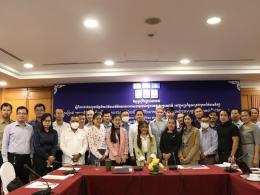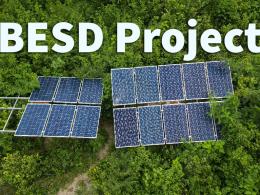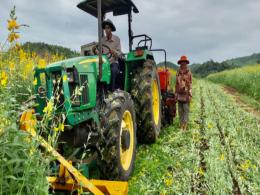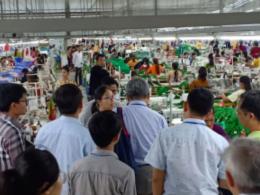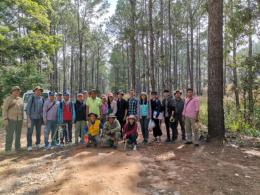Fuelling the low carbon development of Cambodian manufacturing industries by valorizing agro-industries’ biomass residues into energy
Background
The Kingdom of Cambodia, in its Nationally Determined Contribution to the UNFCCC, aims to reduce emissions of manufacturing industries by 727,000 tCO2-eq/year by 2030 with an emphasis on supporting the generation of renewable energy for the rice milling, garment and brick factory sectors. If several options exist to support captive renewable electricity generation for the rice milling sector, no scalable models are available to support the garment and brick manufacturing sectors, which do not generate their own biomass resources. The garment and brick manufacturing sectors have been over-harvesting more than 380,000 tons of wood per year in excess of the forest regeneration capacity. This represents emissions of 650,000 tCO2e or 46% of the GHG emissions of these sectors. The expected decrease in deforestation rate related to land-use change will lead to an increase in wood energy prices jeopardizing the competitiveness of these sectors, while a switch to diesel oil would strongly increase their direct GHG emissions, threatening the INDC objectives. Therefore, the development of alternative, secure, cheap and renewable energy sources is essential for the low-carbon development of these industries. The action will support specifically the two main sectors identified by the Ministry of Industry and Handicraft in its Climate Change Action Plan as driving forces of Cambodian industrial growth: the garment and the brick manufacturing sector.
Overall Objective
Support garment and brick factories low-carbon development through renewable biomass energy consumption.
Expected Results
- A market and policy framework (including fiscal and financial incentives) is supporting the valorization of agro-industries biomass residues to reduce the greenhouse gases emissions of the garment and brick manufacturing sectors and uncertainties from woodfuels consumption
- A model for Palm EFB valorization by agro-industries is developed to fuel garment and brick manufacturing industries low-carbon development.
- The agro-industries and policy-makers are equipped to screen investment plans and projects aiming to valorize agricultural residues into energy.
Location
National
Approach
A research will be done on mapping the biomass energy demand of garment and brick factories as well as their greenhouse gases emissions in order to identify key areas for fuel switch promotion. The potential sustainable agricultural residues supply from agro-industries will be mapped in order to assess priority areas for investment. Based on an assessment of the main barriers for agricultural residues valorization, a NAMA will be developed to support the sector.
The Palm EFB offers a great potential to supply the garment and brick industries’ energy needs. An economic analysis of the different options will be done to select the most appropriate fuels. The selected fuels will then be tested in garment boilers and brick kilns to validate their potential.
Achievements to date
Spatial assessment (mapping) of the woodfuels consumption and greenhouse gases emissions from garment and brick industries.
Calculation of the GHG emission factors of the garment and brick manufacturing industries per tonne of product or employee.
Developping a NAMA on Sustainable Biomass Fuels and submitting it to the Ministry of Environment for approval
Performance testing in garment boiler for steam generation and gasifiers for electricity production.
Assess the economic, social and environmental feasibility of the most relevant options tested
Develop an innovative Decision Support Tool allowing policy-makers, agro-industries or any entrepreneur to assess the financial, technical, environmental and social feasibility of agro-residues valorization into energy fuels
Disseminate the project’s results to key stakeholders such as policy-makers, agro-industries, manufacturing industries association, through a final workshop


